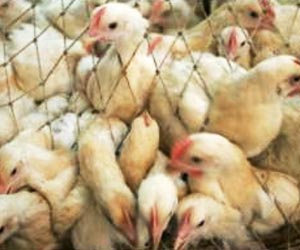The deadly H5N1 flu virus disarms the human immune system by hiding bits of genetic material that would normally trigger an infection alarm, according to a study published Thursday.
Pieces of protein inside the virus form tube-like structures that obscure strands of RNA formed as host cells are attacked, according to the study.The finding may explain why this strain of bird flu is so deadly in people, and could lead to drugs that will unmask the virus and let our natural defences do their job, the researchers said.
"Once we confirm the importance of this structural information, we should be able to design drugs to block this action," said Venkataram Prasad, a professor at Baylor College of Medicine in Houston, and leader of the study.
Earlier research had shown that the so-called NS1 protein played a key role in H5N1's virulence.
In experiments, Prasad and co-author Zachary Bornholdt "crystallised" the proteins, making it possible to analyse their three-dimensional structure using a technique called X-ray crystallography.
Images from a cryo-electron microscope revealed that the proteins interact to create tiny tubes, hiding the RNA, generated during infection, that would normally prompt the body's immune system activate.
Advertisement
The H5N1 strain first emerged in Asia in 2003 and has killed 245 people, more than 60 percent of those known to have been infected, according to the World Health Organisation (WHO).
Advertisement
The study was published in the London-based science journal Nature.
Source-AFP
SRM/SK








